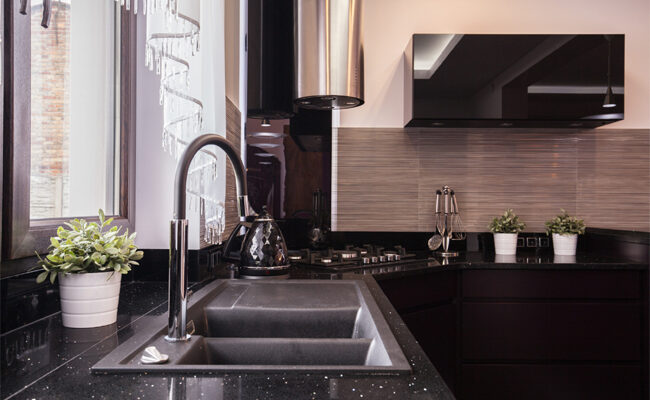
The average American spends 27 minutes in the kitchen each day. Much of this time is spent prepping and cleaning ingredients and utensils on the kitchen countertop.
Countertop cleaning may be something that happens several times a day in your home. It may seem like a simple activity that doesn’t require much thinking or precautions. However, if you don’t do it correctly, you may destroy your countertops.
People make several mistakes when they’re cleaning the kitchen countertops. Here are some of these kitchen countertop care mistakes
1. Lack of Cleaning
Poor cleaning habits can eventually destroy your countertops. In addition, the wrong type of cleaning can still destroy the countertops even if you clean regularly. Therefore, you must use the right type of cleaning detergents and equipment for your countertop.
The ideal type of cleaning depends on your countertop’s material. You also have to know the type of dirt or spills on your countertop.
The most common and worst type of countertop dirt is spills. That’s because they can absorb liquids even after you’ve sealed the countertop. This problem becomes more acute when the liquid has a high PH value.
It’d be best if you clean any spills on countertops as soon as you see them. Using vinegar may be tempting, but its high PH value means that it’ll corrode many materials. Therefore, you must avoid cleaning detergents that contain vinegar or acidic fruits.
In addition, you must also have appropriate cleaning equipment. Things like abrasive scrubbers won’t remove stains from your countertop. Instead, it’d help if you had something such as a soft cloth to work on your countertop.
2. Quickly Wiping Away the Disinfectant
You don’t disinfect most areas in your home, but constant disinfection of the kitchen countertop is necessary. That’s because the kitchen countertop handles many materials, such as eggs and raw meat. Without proper disinfection, these materials will leave permanent stains on your surface.
Nevertheless, regular disinfection won’t be effective if you don’t do it correctly. Most homeowners splash some disinfectant on the surface when cleaning kitchen countertops. This is a waste of time because it won’t work.
Disinfectants take time to dissolve and remove stains. Each disinfectant spray will have instructions on how long you should let it sit on the countertop. Once you apply the disinfectant to the affected area, you can let it sit for several minutes.
Generally, the “dwell time” is a few minutes, mostly 5 to 10 minutes. This ensures that the disinfectant has worked on the affected area and removed stains and dirt.
3. Ignoring Places Underneath Appliances
There will be many appliances sitting on your kitchen countertop. You may assume that the areas beneath the appliances are always clean. This is a big mistake because most end up settling below appliances.
Many people decide to clean the area around the countertops while avoiding the ones beneath. With time, water stains, spills, and crumbs will gather in these ignored areas.
Cleaning the areas beneath appliances prevents the development of permanent stains. Therefore, move stand mixers and coffee makers whenever you’re cleaning your kitchen countertops.
4. Cleaning With Abrasive Brushing Pads
Brushing pads are cheap to buy and use, but they can be ineffective or dangerous on most types of countertops. That’s because they typically leave some scratches on the countertop surface. You’ll not easily notice these scratches until your countertop begins to fade.
The best option is to use appropriate countertop cleaning supplies, such as microfiber clothing to clean the surface. Soft clothes easily absorb any liquids on the countertop services. Also, they don’t leave any scratches on the countertop.
5. Putting Hot Things Directly on the Surface
Many countertops are made from materials that aren’t resistant to heat. Continued exposure to heat can melt or distort the top layer of your countertop. As a result, the countertop will lose its luster and color.
It’s usually difficult or impossible to repair melted or discolored countertops. The option will be to engage in an expensive process of replacing the entire countertop. Consequently, placing very hot things directly on the countertop is a major mistake.
You should also avoid exposing your countertops to sudden temperature changes. It’s good to put an insulation material on top of the countertop before you put hot things on it.
6. Using the Wrong Type of Countertop Material
Perhaps the most important thing that you can do to protect your countertops is to use the right type of material. The right type of countertop material will ease the cleaning process. Choosing a countertop material based on its appearance can be a costly mistake.
Most people prefer granite or quartzite countertops because they are both attractive and long-lasting. In addition, they can withstand extreme heat and don’t absorb stains easily.
You can use virtually any type of detergent on some types of materials. For example, granite countertops won’t corrode when you expose them to disinfectants.
7. Failing to Reseal the Countertops Regularly
Microorganisms are naturally attracted to natural stones such as marble and limestone. These microorganisms will absorb liquids and leave waste on top of your countertops. If you want to protect your countertops, you must seal them regularly.
Many homeowners seal their countertops when they first install them. They forget that the seal won’t be effective over a long period of time. Once the seal becomes damaged, the microorganisms will settle in.
The best option is to seal your countertops at least once every two years. You can also easily know when your countertops need a new sealing. If the water sinks into the countertop in less than 15 minutes after you splash it, then that countertop needs a new sealing.
Protect Your Countertops by Avoiding Kitchen Countertop Care Mistakes
Countertops are an important part of your kitchen. It’s where you’ll prepare food ingredients and clean utensils. The countertops won’t be effective if you make common kitchen countertop care mistakes.
For more practical home improvement tips, please read our other blogs.
Leave a Reply